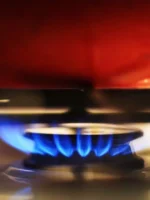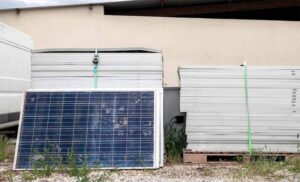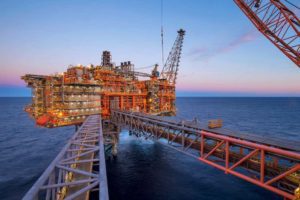The NSW state government says it is beginning the first stage of a $128 million program to upgrade roads and highways to facilitate the transport of huge wind turbines and other “oversize equipment” to its first major renewable energy zones.
The program will target 19 roads and intersections between the Port of Newcastle – where much of the equipment needed for the wind and solar farms and giant battery projects will arrive from overseas – and the surrounding Hunter zone and the Central West Orana renewable energy zone around Dubbo and Dunedoo.
The logistical challenge of transporting blades nearly 80 metres long, and other equipment such as transformers that can weigh hundreds of tonnes, is one of the major headaches for renewable energy developers, requiring careful planning and considerable costs.
It is also a contentious issue for local councils, many of whom have objected to certain renewable energy projects because of fears their roads will be damaged, and circulation interrupted, when hundreds, or even thousands, of such blades and other equipment make their way through their districts.
The NSW government says the “Port to REZ” program is designed to address those issues, and leave regional areas with better roads after the transport movements. The program is being primarily being funded by the state government, with $110 million, with a further $18 million provided by the federal government.
NSW has created five renewable energy zones to support the bulk of new wind, solar and storage capacity to replace its ageing coal fired generators that are due to retire in the next decade. These zones are also crucial for the delivery of the federal government’s target of 82 per cent renewables by 2030.
“Renewable energy projects across the state require large components to be moved along our road network, and the upgrades to local roads will improve safety and comfort for all users,” state energy minister Penny Sharpe said in a statement.
The Central West Orana zone is the first major REZ to be developed in NSW, with the contract to build new transmission to support the new generation and storage recently finalised. Like the New England REZ planned to the north, it involves transport along valleys and over hills, adding to the complexity of the project.
The anxiety of local councils was highlighted in a hearing held nearly a fortnight ago by the Independent Planning Commission into the proposed 938 megawatt Valley of the Winds project slated near Coolah.
The Warrumbungle Shire is concerned about the huge number of projects and the thousands of turbine blades and other equipment that will come through their region, and along the Golden Highway, to both the Central West Orana zone and the south west REZ around Hay.
“The number of oversize-over-mass movements that one project alone requires is around 12 movements per turbine. So, we’re talking about 1,500 movements,” Bevan Crofts, an advisor to the council, told the IPC in a hearing on April 2.
“And if you do the sums, assume that they move maybe three oversize-over-mass loads up from the Port of Newcastle every day, it’ll take a minimum of two years all going well with no delays to basically get just this project’s load up the Golden Highway.
“There’s at least 10 concurrent projects waiting in the wings, including others in other REZ’s that need to use this as the sole feasible route to get from the Port of Newcastle to their site,” Crofts said.
“Each one of those loads moves quite slowly, like, potentially 30 kms to 50 kms per hour up the couple hundred kilometres from the port.”

The first stage of the $128 million program will include upgrades at 19 locations – roads and intersections – to be delivered by BMD Constructions. The works include new turning lanes, pavement widening, drainage adjustments, and even relocation or adjustment of utilities, depending on the location.
More than half of the upgrades named in the first stage of the project involve the Golden Highway in some form.
Other locations cited by the government include Selwyn Street in Mayfield North near Newcastle, Lonsdale Street in Jerrys Plains in the Hunter Valley, and Vinegaroy Road in Cassilis and Barneys Reef Road in Dunedoo in the central west.
NSW minister for roads and regional transport Jenny Aitchison said the work will enable the safe movement of wind and solar farm components on the road network.
“These 19 road upgrades will result in greater capacity and a safer road environment from the Port of Newcastle, through the Hunter and then into the Central West where these farms will be located,” she said in a statement.
“The beneficiaries will be all motorists, not just those driving the oversized loads.”








